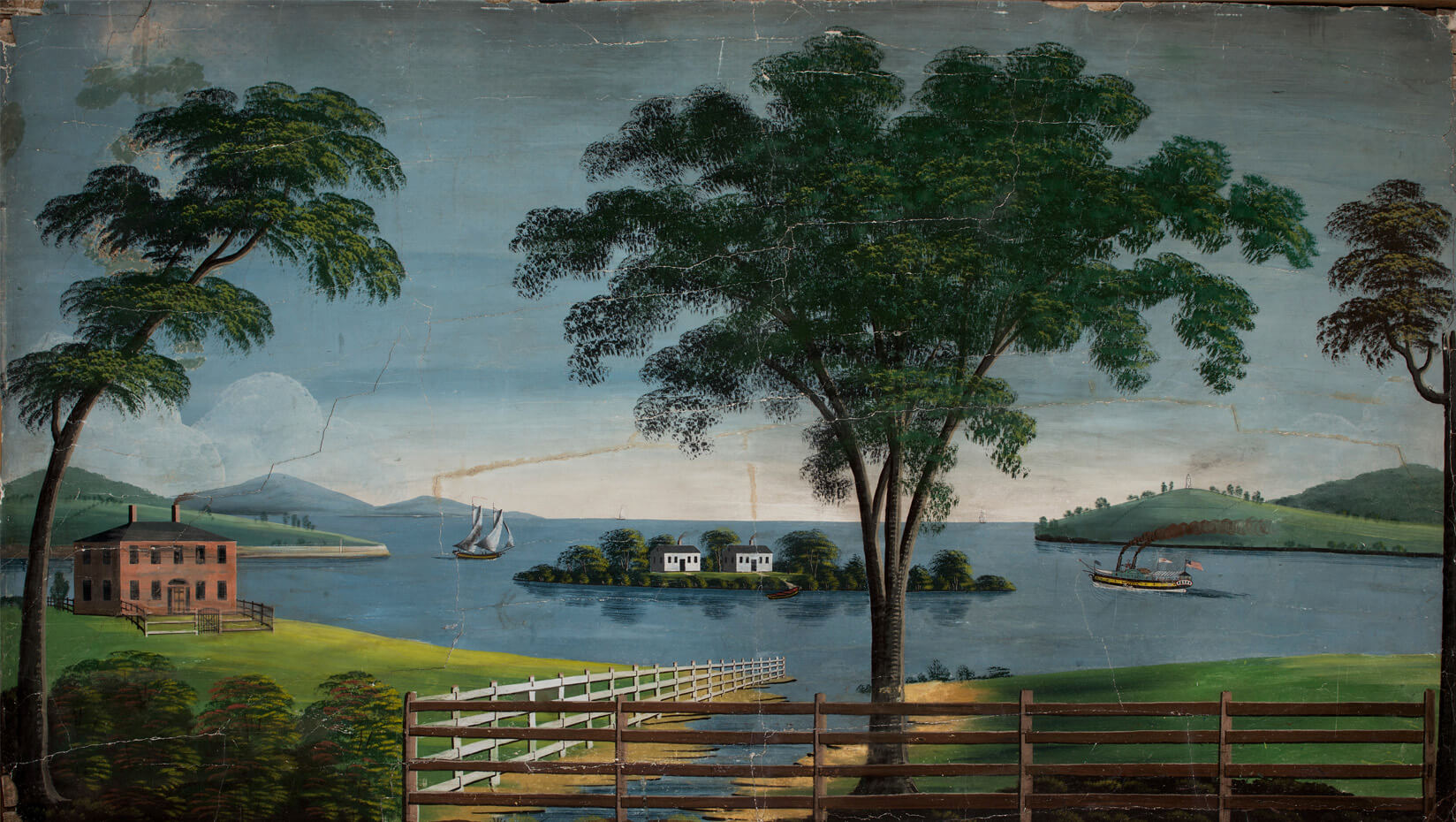
New exhibition, ‘Rufus Porter’s Curious World,’ co-curated by UMaine professor of art history
The intersection of art and technology in the work of Rufus Porter, founder of Scientific American magazine, is the focus of a new exhibition at the Bowdoin College Museum of Art, co-curated by a University of Maine faculty member.
Justin Wolff, professor of art history in the UMaine Department of Art, co-curated the exhibition, “Rufus Porter’s Curious World: Art and Invention in America, 1815–1860,” and co-edited a catalogue by the same name with Laura Sprague, senior consulting curator at the Bowdoin College Museum of Art.
The exhibition, which runs Dec. 12–May 31, includes more than 80 paintings, inventions, and publications by Porter and a number of his more well-known contemporaries, including Samuel F.B. Morse, Robert Fulton, Charles Bird King, and Winslow Homer.
“Porter was keenly aware of and plugged into the new interconnected systems or networks that were proliferating around him and joining curious Americans to one another and to inventive ideas,” writes Wolff in “Itinerancy, Aerial Navigation, and the Many Networks of Rufus Porter,” a chapter in “Rufus Porter’s Curious World,” published by Penn State University Press. “He was a spatial thinker who designed systems across various scales — including tiny machine parts, miniature portraits, newspaper pages, wall murals, and coast-to-coast flight — and conceived of small mechanical improvements that would have national impact.”
Born in Massachusetts in 1792, Porter spent his childhood near Bridgton, and lived and worked in Portland as a young man. He made his living as a professional itinerant painter, traveling throughout New England producing miniature portraits and wall murals.
Porter also was an inventor, and had a particular fascination with wind power and aerodynamics. His paintings often featured ships and boats. He also dreamed of mechanical flight and, 50 years before the Wright Brothers, promoted a never-realized steam-powered “aeroport.” Porter patented a few dozen inventions, and in 1845 founded Scientific American magazine.
TIME magazine posthumously described Porter as a “Yankee Da Vinci.”
Wolff and Sprague have been working on the exhibition and accompanying catalogue for nearly three years.
“A significant aspect of the project is the emphasis on spatial thinking, on the shared values and tools of art and science and technology — a topic of special importance on college and university campuses in an age when the arts and humanities are too often negatively compared to STEM disciplines,” says Wolff, a Bowdoin College alumnus.
Wolff’s research focuses on 19th- and 20th-century American art, visual culture, and intellectual history. Among his publications are two books on painters Richard Caton Woodville and Thomas Hart Benton, and “A Strange Familiarity: Alexander Forbes and the Aesthetics of Amateur Film,” a chapter in the award-winning anthology “Amateur Movie Making: Aesthetics of the Everyday in New England Film, 1915–1960.”
A Bowdoin College news release about the exhibition is online.
Contact: Margaret Nagle, 207.581.3745
